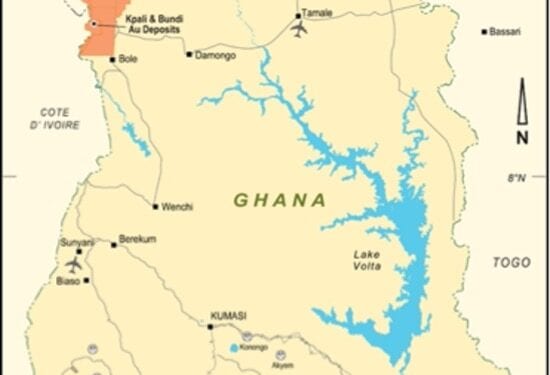Bulk Sampling Programme Underway In Ghana
Strong commodity pricing has convinced Castle Minerals Limited (ASX: CDT) to undertake a bulk sampling test work programme to enable the company to identify possible commercial options for its Kambale graphite project in Ghana’s Upper West region.
Managing Director, Stephen Stone, said the reappraisal of the Kambale graphite project is consistent with improved market prices for graphite concentrates and a positive longer-term outlook for the commodity. These are underpinned by its use in the manufacture of lithium-ion batteries which are being increasingly used in electric vehicles, consumer electronics and other electricity storage applications.
“The Kambale graphite project in northern Ghana is a sleeper asset within Castle which now warrants a reappraisal given the relatively strong present and positive long-term outlook for graphite concentrate prices,” Mr Stone said.
“Drilling, a maiden Mineral Resource estimation and preliminary metallurgical test work in 2012 was encouraging enough that we will now excavate bulk samples to produce flotation concentrates for flowsheet design, concentrate characterisation, market positioning and project benchmarking studies. We will then be in a position to make an informed decision as to how best we should take Kambale forward.”
Encouraged by elevated graphite prices in 2012, three consecutive phases of RAB, aircore and reverse circulation (RC) drilling were completed at Kambale.
Following the completion of the first two phases of drilling an independent Mineral Resource estimate defined a maiden Inferred Resource (JORC 2004) of 14.4Mt at 7.2%C (graphitic carbon) for 1.03Mt contained graphite, including 6.0Mt @ 8.6%C for 0.52Mt contained graphite (JORC 2004). This extended over a strike of 1.25km and to a maximum depth of 110m.
The third phase of drilling extended mineralisation to a total strike of 2km. Mapping and geophysics indicate that there is considerable scope to extend the deposit as drilling has only tested a small section of the interpreted graphitic schist horizon host
The Mineral Resource estimate was made in July 2012 and complied with recommendations in the Australasian Code for Reporting of Mineral Resources and Ore Reserves (2004) by the Joint Ore Reserves Committee (JORC). Castle is not aware of any new information or data that materially affects the information included in the JORC 2004 Mineral Resource estimate and that all material assumptions and technical parameters underpinning the Mineral Resource estimate continue to apply.
The resource estimate released in July 2012 did not include any assumptions about mining, mining dilution, metallurgy or processing methods. No bulk density measurements were undertaken.
Preliminary and very limited metallurgical test work in 2012, using a small quantity of RC drill chip samples of oxide and fresh material collected from several drill holes, indicated that it should be possible to produce and upgrade a graphite concentrate.
Mr Stone said extensive additional test work and flotation concentrate optimisation, using excavator retrieved bulk samples of mineralisation extracted from various locations along the deposit’s strike, will commence shortly.
He said this will provide more reliable data on flotation performance, likely concentrate specifications, where products might be positioned in the graphite market and project benchmarking against other developed and undeveloped deposits. This work will be undertaken in Perth and Germany.
Infill and step-out drilling to confirm the existing Inferred Mineral Resource, to better understand graphite distribution and characteristics within the deposit and to extend mineralisation, is subject to the results of these studies.
The project is located close to the Upper West regional capital of Wa which is 400km north by good sealed roads of a major rail head at Kumasi. It is then approximately 240km by rail to the international port of Tema, 30km west of the capital Accra, which provides direct access to global export markets. An alternative Port of Sekondi-Takoradi is located approximately 230km west of Accra.












